May 18, 2025 | 09:12 GMT +7
May 18, 2025 | 09:12 GMT +7
Hotline: 0913.378.918
May 18, 2025 | 09:12 GMT +7
Hotline: 0913.378.918

Organic Te Rau rice model in Ta Leng commune. Photo: Hoang Anh.
In the summer-autumn crop of 2023, Que Lam Biotech One Member Co., Ltd. (Que Lam Group) continues to coordinate with the Department of Agriculture and Rural Development of Tam Duong district (Lai Chau province) to implement the model of producing Te Rau rice according to the organic process in Ta Leng commune.
The model summaries day is as fun as a festival. Ta Leng is mainly a Hmong community living for many generations with about 5,000 people. Although the life of the people at the foot of Pu Ta Leng peak is still difficult, the Mong people in Ta Leng have a very precious upland rice variety called Te Rau.
Although it can only do one crop a year on terraced fields, located in the middle of the sky, 1,000m above sea level, that rice variety seems to crystallize the soil, air, and mountain wind to create something special. The rice has long and plump grains, and when cooked, it has an unmistakable sweet taste and aroma.
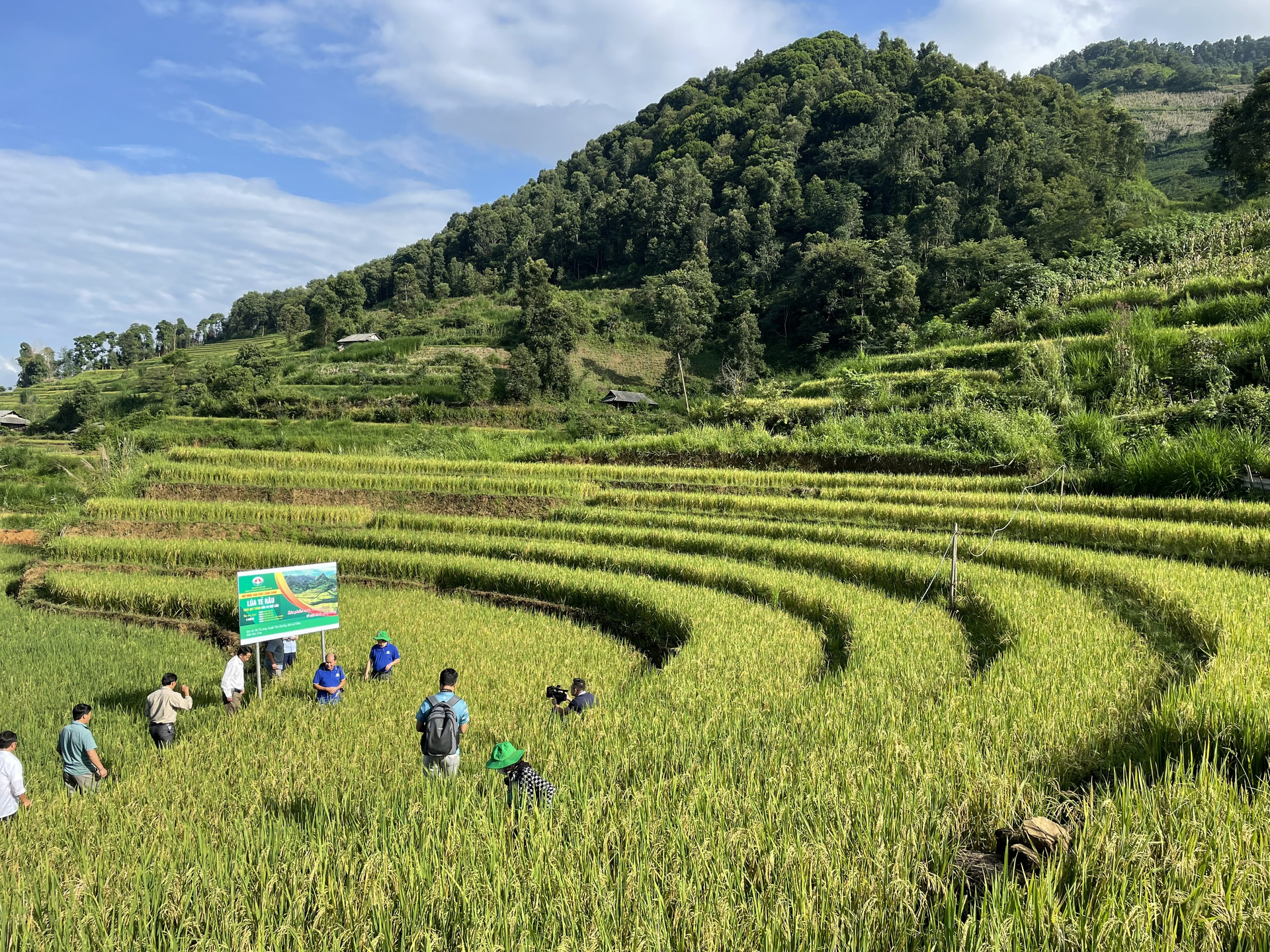
Te Rau rice specialties in the middle of the Northwest sky. Photo: Hoang Anh.
Implementing the Memorandum of Investment Commitment between the People's Committee of Lai Chau Province and Que Lam Group on coordinating the development of organic agriculture, from 2021, the organic Te Rau rice production model has been organized with the determination to change farming practices, enhance value and build a brand for this precious rice variety. In the first phase, the process of implementing the model faced many difficulties because people's farming practices were still familiar with the old style, but from 2022 to this year's summer-autumn crop, the results were successful.
Joining the people to summarize the model, Mr. Tung Van Khiem, the Chairman of Ta Leng Commune People's Committee excitedly said: In 2022, the commune will only grow more than 5 hectares of Te Rau rice according to the organic production process with 9 households in Nung Than village participated, but this year the area has increased to more than 10 hectares, the number of people registering to grow organic Te Rau rice is increasing day by day.
Despite the harsh and hot weather, and prolonged drought, the area where the model is implemented is all terraced fields, dependent on rainwater, and the soil is dry and hard, so people cannot cultivate land for sowing rice, many households by the time the seedlings were transplanted had no water in the field, and by the time they were transplanted, the seedlings were old... However, thanks to organic production, Te Rau rice still grew well, with increased productivity compared to the previous crop and higher than other control model.
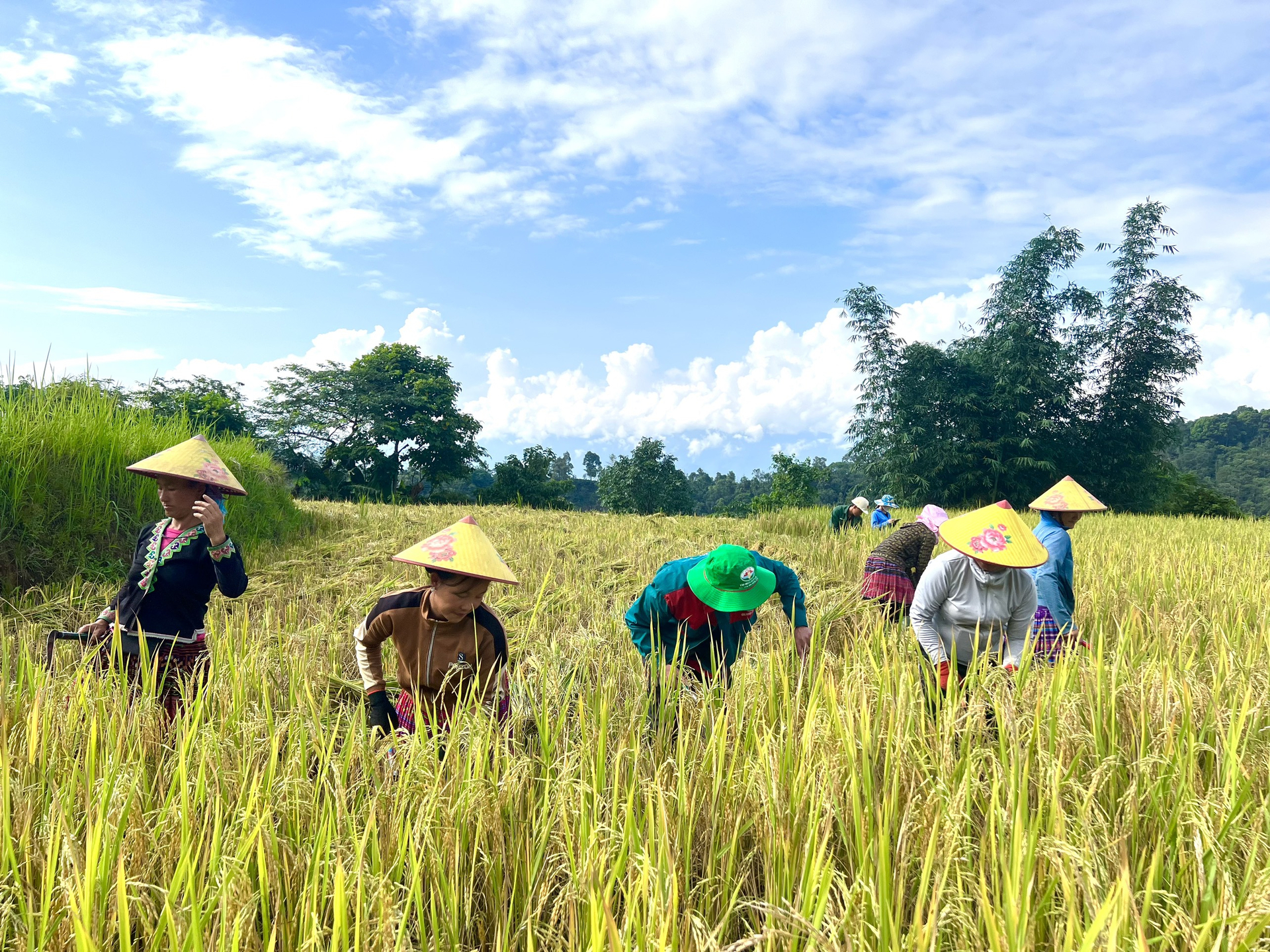
Mong people in Ta Leng harvest organic Te Rau rice. Photo: Hoang Anh.
Especially in the rice stage, the difference between the organic Te Rau rice production model and the control model is even more obvious. In fields outside the model, some households had to spray to prevent leafroll pests, but in the model they did not have to spray because the insect density was very low. In the period before and after flowering, the density of leaf rollers and stem borers in the model is low, so they do not have to be controlled, while rice outside the model must be prevented from stem borers, leaf blight disease...
In addition, because this is the second year of growing Te Rau rice according to the organic process, the phenomenon of rice roots being clogged due to the field being too acidic has decreased a lot, the rice plants are growing normally, and the phenomenon of patchy yellow-green rice fields due to suffocation of the roots are also no longer there.
In the second year of implementing the organic Te Rau rice production model, Mr. Hang A Kho in Nung Than village happily said: In the past, Mong people who grew rice often used a lot of pesticides, herbicides, and fertilizers. With chemical fertilizers, since collaborating with the Que Lam Group to produce Te Rau organic rice, we have seen many good things, so people have changed a lot.
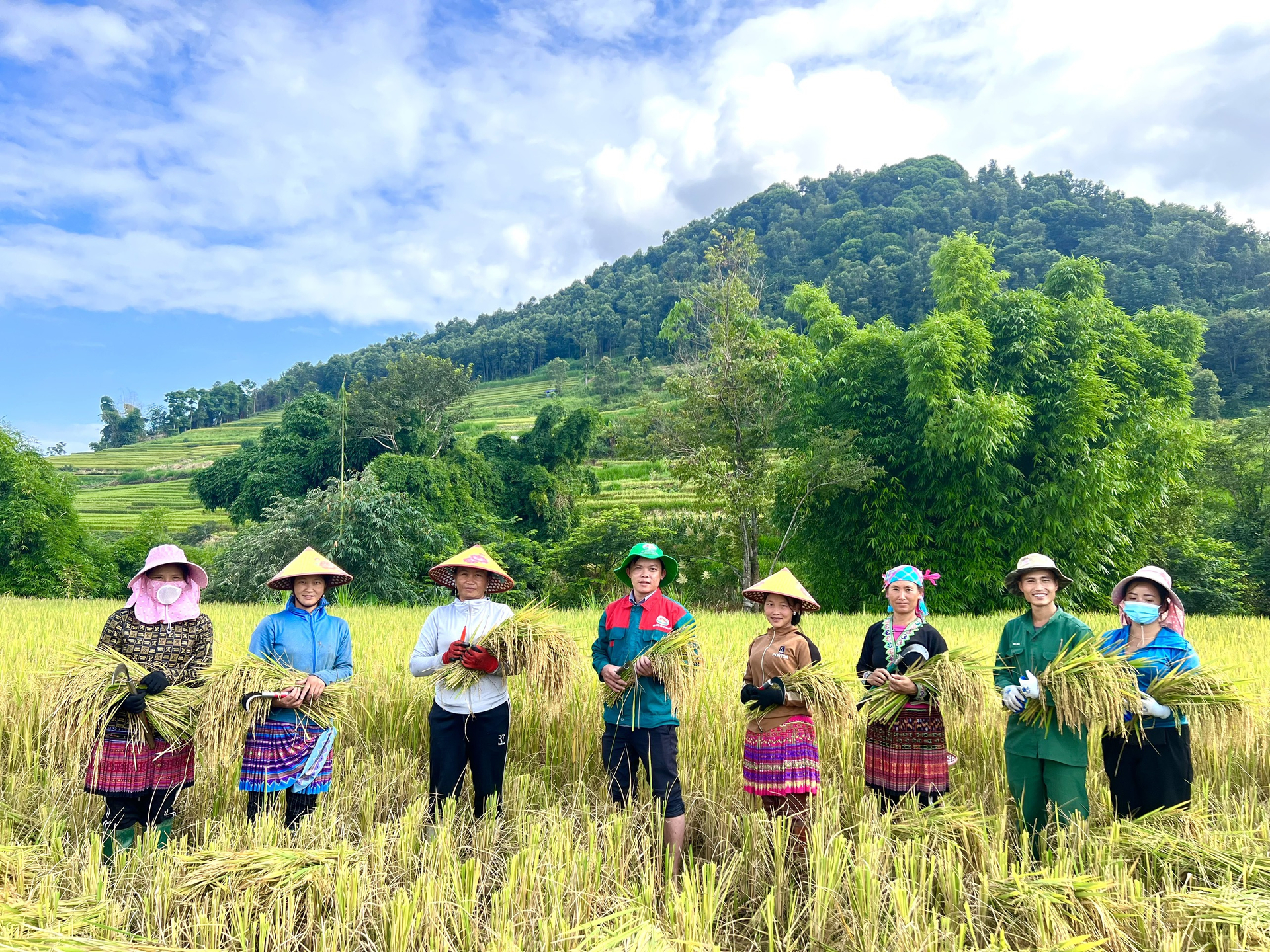
People in the highlands are excited because the organic Te Rau rice model has higher productivity and selling price than traditional production. Photo: Hoang Anh.
Unlike mixed rice, Te Rau rice must be planted on time, but this year because of drought, people planted it late. After May 10, the seedlings could be sown, but when they were transplanted again, there was no water. Despite facing so many difficulties, the Te Rau rice in the model is very good, no pests or diseases, no yellow rice leaves, no clogged roots...
"This year, fertilizer prices are high, but thanks to production links, the Que Lam Group committed to maintaining the policy of supporting input material costs (households participating in the model only have to pay VND 500,000/1,000 m2). ) so people can reduce the burden of investment costs. The rice yield has not yet been harvested but will certainly be higher than last year. The people of Nung Than village are very happy, next year if Que Lam Group can still cooperate in the production of organic Te Rau rice, we will continue to register more area," said Mr. Hang A Kho excitedly
Mr. Nguyen Dinh Thuong, Head of the Department of Agriculture and Rural Development of Tam Duong district, said: In addition to supporting people with input materials in production, Que Lam Group also supports technical consulting, funding for transporting survey and inspection experts. Check throughout the model implementation process. After harvesting, Que Lam Group commits to purchasing for farmers at a price of VND 15,500/kg of dried and cleaned Te Rau rice.

After harvesting, Que Lam Group committed to purchasing rice for farmers at a price of VND 15,500/kg of dried and cleaned Te Rau rice. Photo: Hoang Anh.
After two seasons of implementation, it has now been possible to confirm some outstanding points of the organic Te Rau rice production model such as: The phenomenon of rice root choking due to acidic field soil has been greatly reduced, rice plants grow better and more evenly. It is expected that rice yield and quality in 2023 will be higher than in 2022 and also 10% higher than outside the model. Te Rau rice in the linked model does not have to be sprayed because the pest density is low and has not reached the prevention threshold.
"This year's Te Rau rice production linkage model continues to be successful, so the people of Nung Than village are completely assured and confident in implementing the model in the coming years. Most importantly, people have changed their thinking, grasped organic rice production techniques, ensuring product quality safety and health, protecting the soil environment and ecological environment...
We propose that in 2024, Que Lam and Ta Leng will expand over 20 - 30 hectares. Tam Duong district will also combine a number of policies with the Que Lam Group to support people more about fertilizer prices, seed prices and product quality registration for the model," Mr. Nguyen Dinh Thuong said.
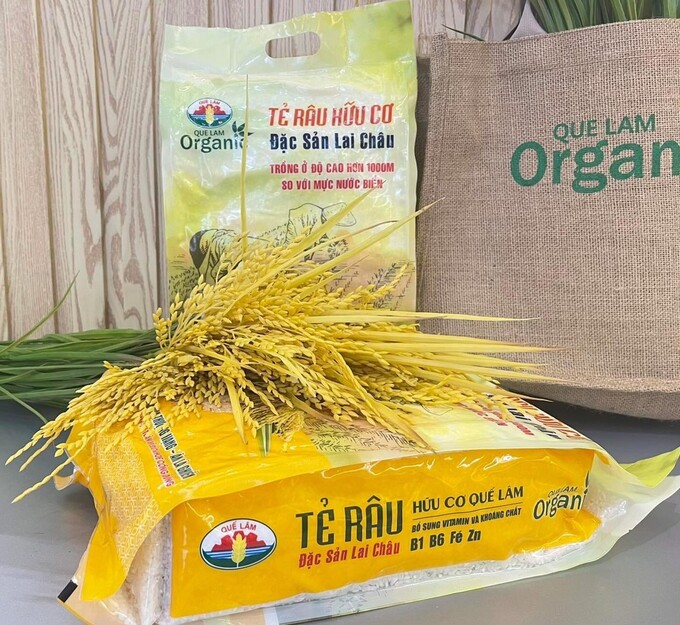
Lai Chau is focusing on building the organic Te Rau rice brand, a provincial specialty. Photo: Hoang Anh.
As for the People's Committee of Lai Chau province, the model of linking organic Te Rau rice production in Ta Leng is of great significance in the context that this province is building an agricultural development philosophy towards multi-value, commodity production, as well as focusing on the development of specialty products associated with the value chain.
Currently, Lai Chau province and Que Lam Group are cooperating to build the organic Te Rau rice brand. From the success of the model in Ta Leng commune, Lai Chau province hopes that Que Lam Group will coordinate with management agencies, especially ethnic minorities, to continue implementing models of linking organic production, towards organic and circular agricultural production, in order to jointly introduce and promote endemic products of Lai Chau province to consumers across the country.
Translated by Bao Ngoc
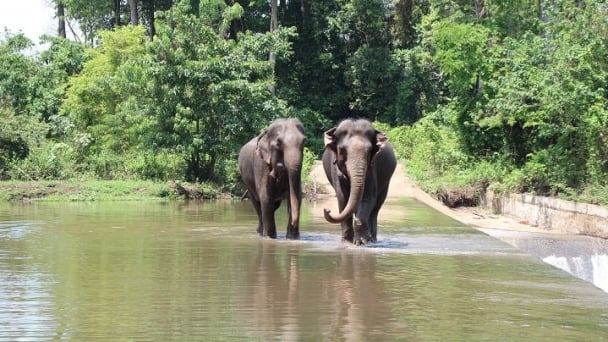
(VAN) 14 out of 35 domesticated elephants in Dak Lak province have had their living conditions improved, with 11 of them currently participating in the non-riding elephant tourism model.

(VAN) Muong Nhe Nature Reserve hopes that being upgraded to a national park will lay the foundation for forest protection efforts to be carried out in a systematic, modern, and sustainable manner.
/2025/05/16/3923-2-171845_52.jpg)
(VAN) Lower costs, higher yields, and improved soil quality are outstanding benefits that soybeans bring when integrated into the crop rotation system.
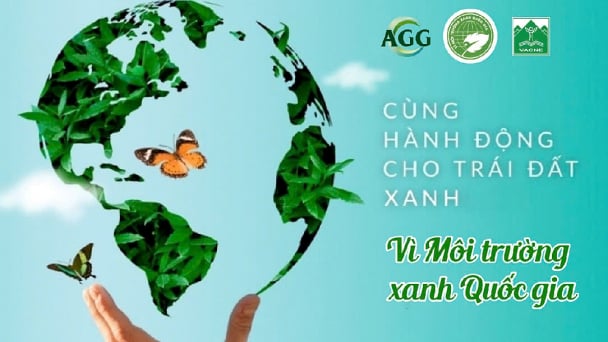
(VAN) The 'For a Green National Environment' programme aims to promote a green lifestyle, support businesses in implementing ESG practices, and turn Net Zero commitments into concrete actions.
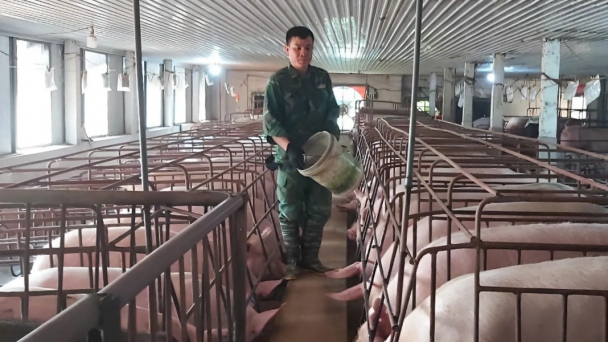
(VAN) Cold-barn systems efficiently manage environmental and temperature conditions, which aids in the prevention of respiratory diseases in pigs and protects them from the vectors that transmit African swine fevers.
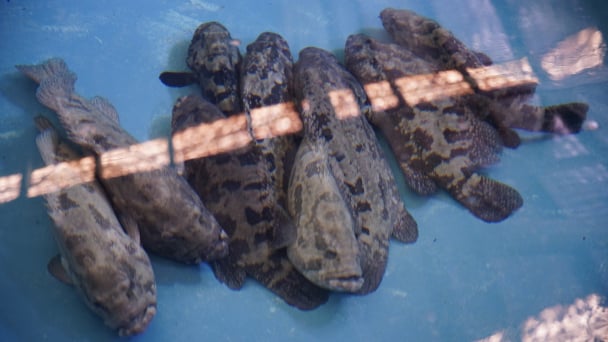
(VAN) To tackle challenges, the project 'Addressing key technical bottlenecks in the grouper supply chain in Vietnam' has been underway since 2024.
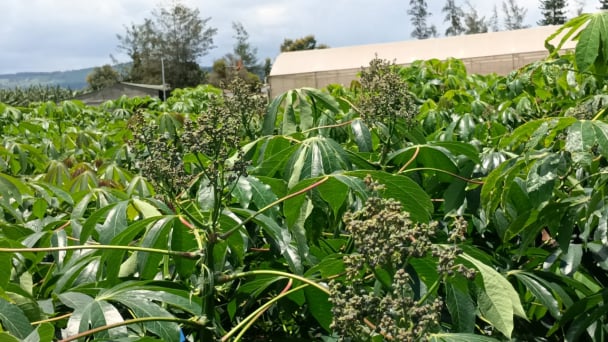
(VAN) The project 'Disease-Resilient and Sustainable Cassava Production Systems in the Mekong Region', funded by the Australian Center for International Agricultural Research (ACIAR), is being implemented from 2024 to 2028.